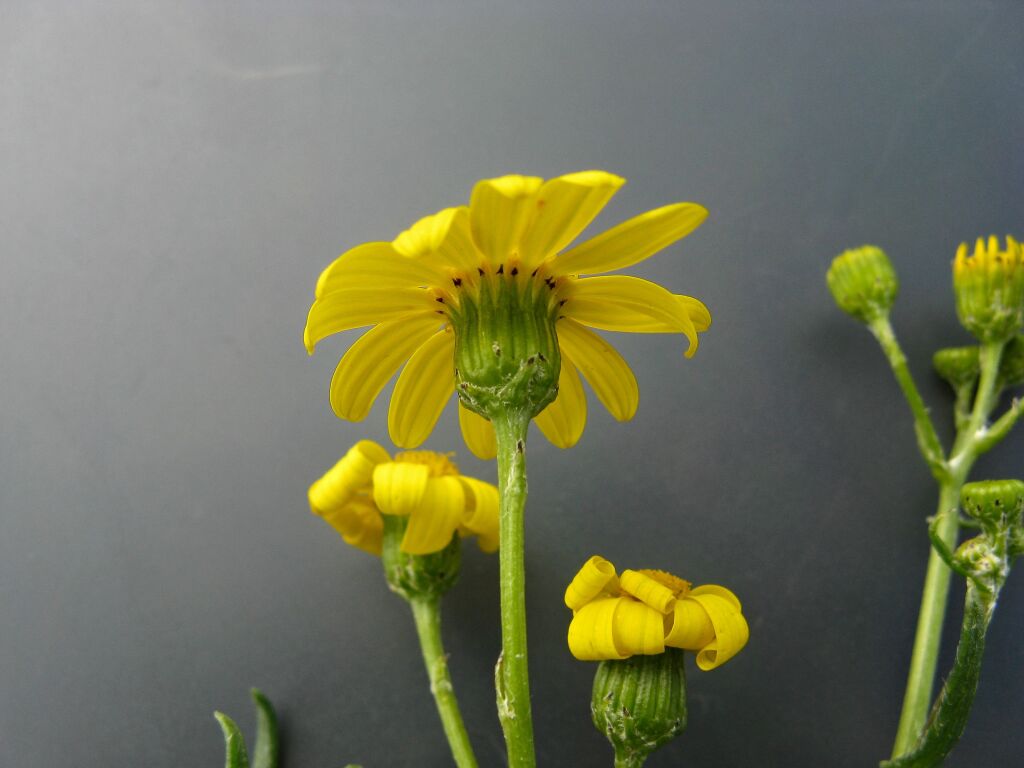Senecio spanomerus
I.Thomps.Erect, perennial to c. 1.0 m high. Leaves sessile, undivided or pinnatisect with 1–3 segments per side, to 10 cm long, 3–27 mm wide, subfleshy to fleshy, succulent on coast, bases becoming auriculate up stem. Inflorescence of 3–20 capitula; capitula radiate; involucre cup-shaped or campanulate, 4.0–6.0 mm long; bracts c. 13 in all or most capitula or c. 20 in all or most capitula, bracteoles present. Ray florets 8–13, yellow, ligules 6–12 mm long; corolla of disc florets 50–80, yellow. Cypselas 1.8–2.8 mm long, those of ray florets reddish with papillose hairs covering all or most of surface, those of disc florets brown with papillose hairs in broad bands covering 50–90% of surface; pappus of slender hairs, 4–5 mm long, deciduous. Flowers Jul.–Nov.
LoM, MuM, Wim, VRiv, MSB, RobP, GipP, Gold, GGr, DunT, HNF. Also WA, SA, NSW. Mostly in the north-west and west, where it occurs in sandy or loamy soils on plains and sandhills.
Very similar to and previously regarded as a variety of Senecio pinnatifolius, but is distinguished from S. pinnatifolius by the combination of shorter cypselas and the leaf features given in the key. Senecio spanomerus is also mostly in the north-west and west of the State and has only very rarely been recorded south of the Grampians and Bendigo, whereas S. pinnatifolius is common throughout the south and east of the state and is very rare north of the Grampians and Bendigo.
 Spinning
Spinning



